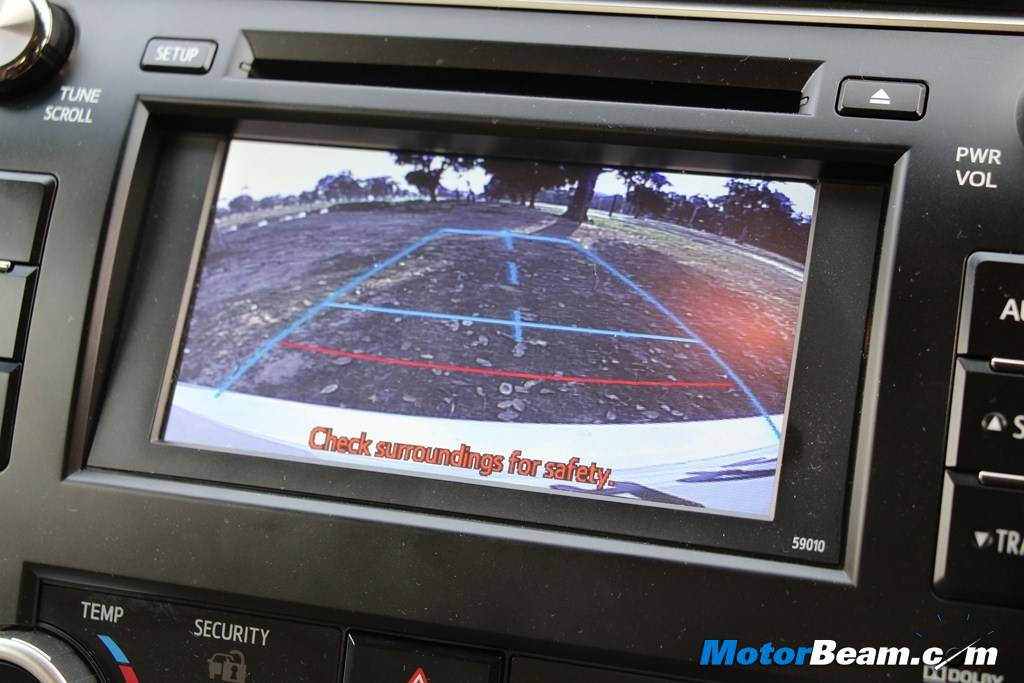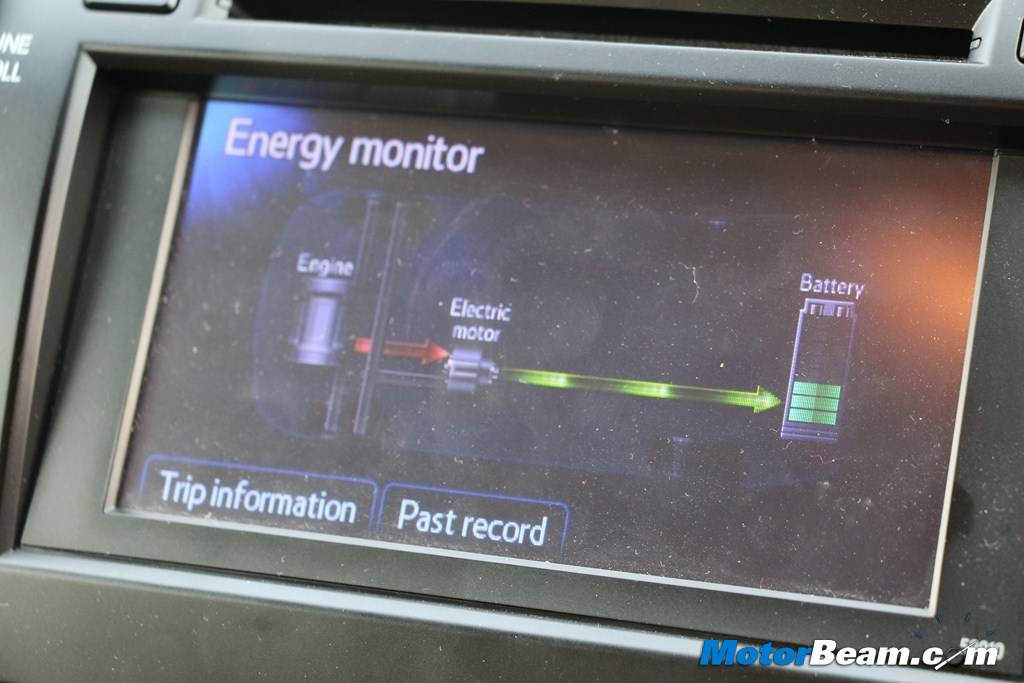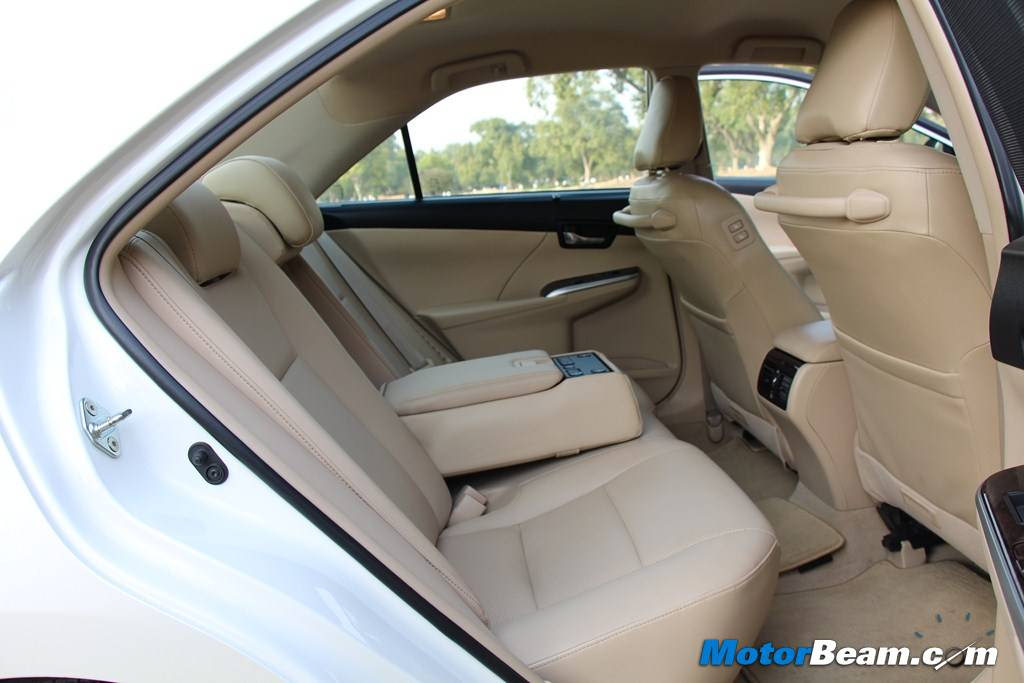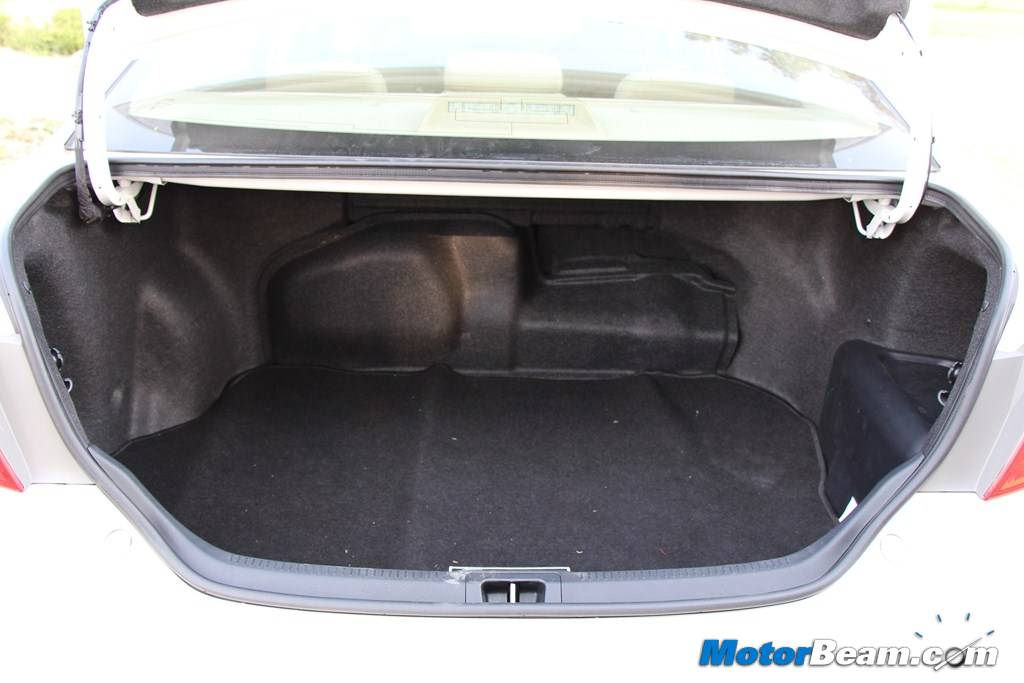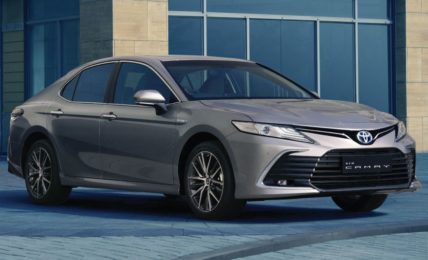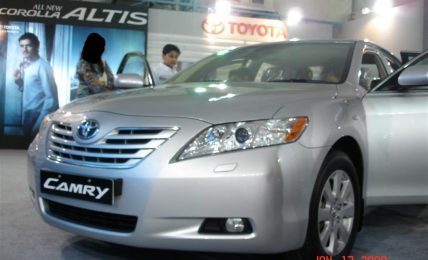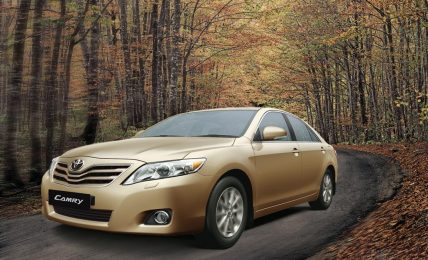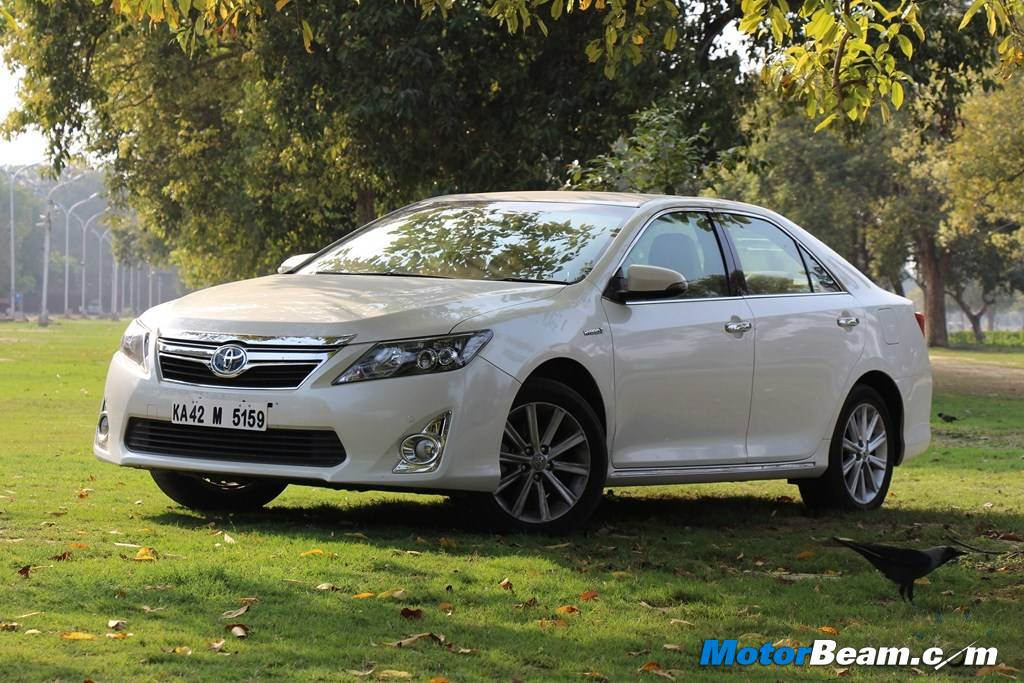
2014 Toyota Camry Hybrid Review
Car Tested: 2014 Toyota Camry Hybrid
Price OTR Mumbai: Rs. 35,26,320/-
The Camry Hybrid is an environment friendly luxury sedan with more appeal than a Prius.
Many of us have a mindset that big and luxurious cars are expensive to run on a daily basis because of their gas guzzling nature. Carmakers came up with a solution – diesel powered luxury cars. Diesel engines are nowadays much refined and offer performance with good fuel economy but still, some people are against the concept of having an inharmonious diesel unit under the hood of their extravagant ride. Now Toyota has a solution to entertain such audience – the Toyota Camry Hybrid. The Japanese automaker is offering a full size D-segment sedan with a petrol hybrid powertrain that intends to keep the fuel bills in check along with providing the uncompromised luxury car feel. We spend some time with the Toyota Camry Hybrid to experience the unique combination.
Motor Quest: Toyota introduced the Camry nameplate in 1982 and since then it has been a popular car. The Toyota Camry XV30 series was introduced first in India in 2002, which was then updated to a new generation model XV40 in 2007. The current generation (XV50) was introduced in 2012 which was updated with the hybrid model in 2013.
Camry Hybrid gets updated front fascia including grille, lights and bumper
Exteriors – Toyota has given the Camry Hybrid some visual changes to differentiate it from the regular version. So the front bumper is revised that now gets a new setup of fog lamps that get different housing compared to the regular Camry’s airdam integrated fog lamps. Then there is the front grille that gets black slats and thick chrome with a blue shaded Toyota badge, which is standard on Toyota hybrid cars. The headlight cluster gets black inserts and dual projector lamps but surprisingly the headlamp washers have been omitted on the hybrid version.
The sedate design language makes it look elegant from the side profile
The side profile of Toyota Camry reveals the enormous length (4825 mm) of the car. There is a simple shoulder line running throughout the body and at the lower end, there is a sleek chrome strip that highlights the huge wheelbase, which is around 14 mm more than the Skoda Superb. The front fender gets the Hybrid badging. The 10-spoke alloy wheels are sleeker than the regular version that gels nicely with the exteriors. The window frames get chrome highlighting and the B-pillar is black. However, the tail overhang seems a tad longer than our liking.
The rear doesn’t match with the aggressive front, lots of chrome used on the exteriors
Now the rear profile looks serious compared to the polished front styling. The tail looks slightly lifted, thanks to the rear bumper styling. The reflectors are integrated neatly onto the bumpers. The tail lamps are chunky and wide, connected with a thick slat of chrome and there’s the blue Toyota hybrid logo again. The overall styling is quite appealing and sedate but not as striking and fancy as the Skoda Superb, Hyundai Sonata or even the Honda Accord for that matter.
The interiors are spacious, having top notch quality and features, it’s a nice place to be in
Interiors – Once you step inside the Camry for the first time, it will take a while for you to examine the details. First and foremost is the sense of space which you get from the roomy cabin, beige upholstery, large windows and a wide windscreen. Then there is the top notch quality, fit and finish throughout the cabin, including the soft leather seats and the tactile feedback from each and every control and buttons. The dashboard gets black, beige, silver and dark brown shades, which can be unsightly for some but looks decent and premium in flesh. The wood inserts are of darker shade compared to those used in the regular Camry.
The design of dashboard and central console is simple and straight. The steering wheel is big but feels good to hold and the integrated controls are easy to use. There is a cruise control stalk hiding behind the steering wheel. The instrument console is easy to read and displays a host of information. Instead of the tachometer, you get the hybrid system indicator on the left most meter. There are three small digital displays that read outside temperature, engine temperature, transmission mode, cruising range, average fuel economy, trip meter, ODO and similar car related information.
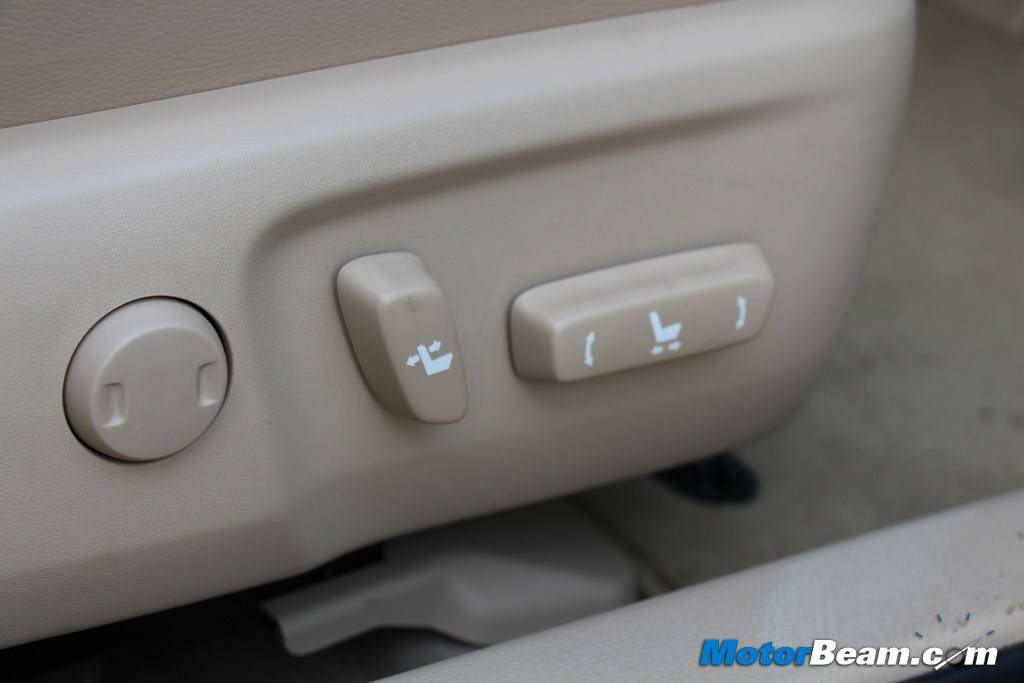
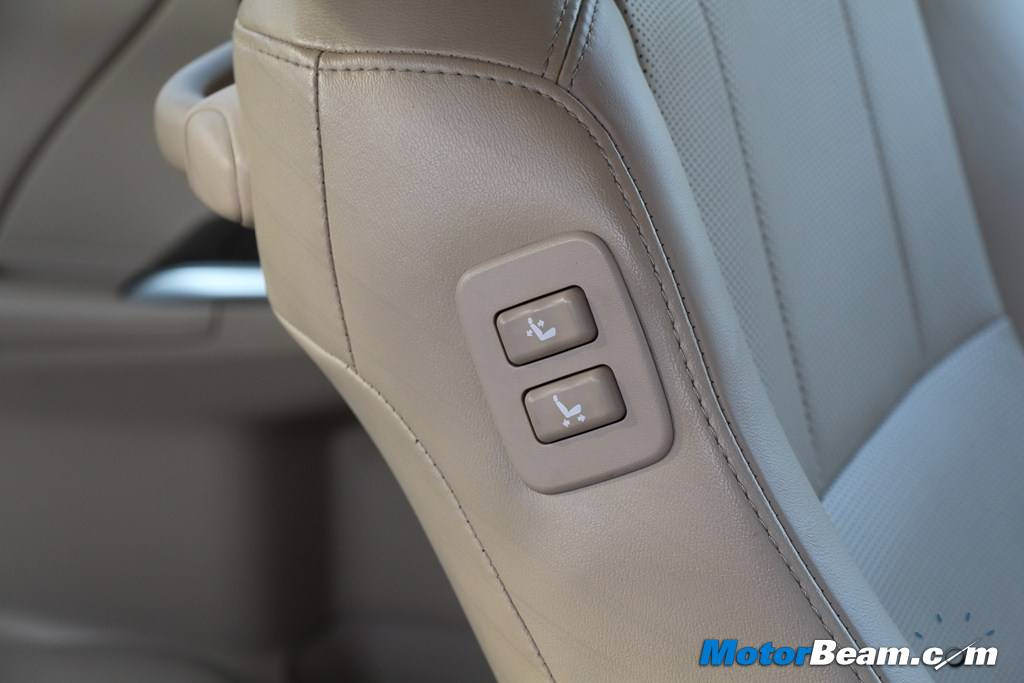
All seats are electrically adjustable including the rear seats that recline with a touch of a button
It comes with a 3-zone air conditioning system – two for the front and one for the rear that chills the cabin within no time. Both the front seats have ventilation system for the cushion and the back support to remove moisture. The central console gets a big touchscreen that has DVD audio system, MP3, USB, AUX and Bluetooth connectivity with crisp audio quality. It also acts as a screen for rear parking camera and displays vehicle information such as the hybrid system working, average speed, fuel history, trip information, etc.
Behind the steering wheel you have engine start/stop button, parking sensors switch and ORVM control buttons (ORVMs tilt down when you engage reverse gear). All windows have one touch auto up/down feature. The front seats are electrically adjustable, where the driver seat gets memory function for two. The footwell is wide and accommodates foot operated parking brake, dead pedal and well spaced out brake and accelerator pedals. There are ample storage spaces and cup holders in the cabin for convenience.

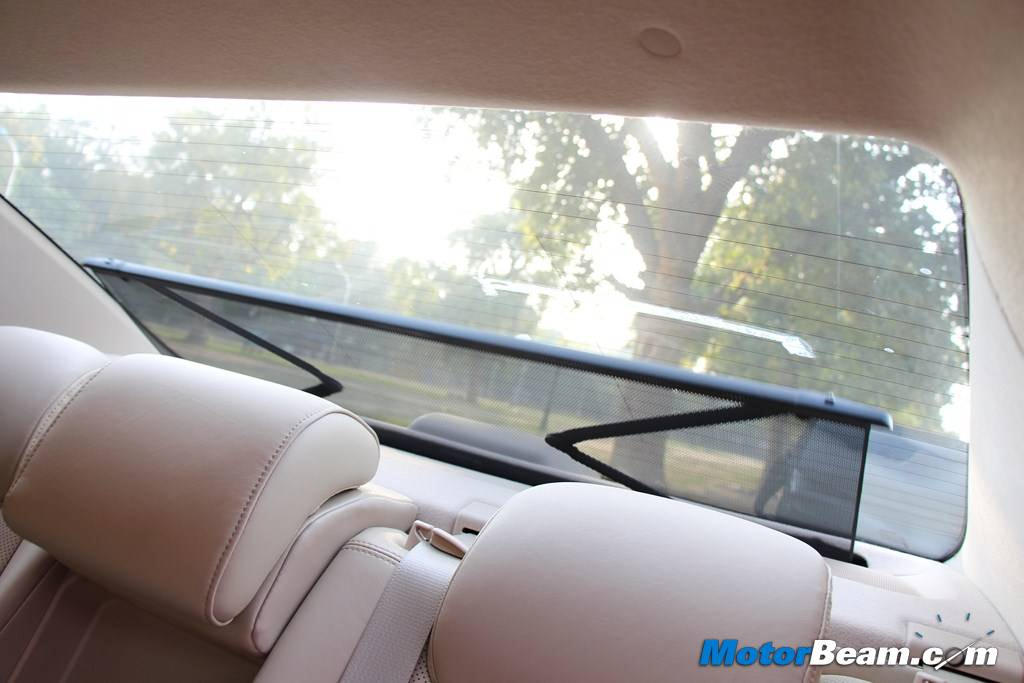
The rear armrest gets various controls for audio system, reclining seats, air conditioning and rear sunshade
Five people can sit with pure comfort and ease as all the seats are extremely supportive and the legroom is incalculable. The rear also has some nifty features as the Camry is mostly used as a chauffeur driven car in India. The rear armrest has all the controls to keep you in utmost comfort. Both the seats at the rear are individually reclinable and you get controls for the same on the armrest. Then there are the audio controls through which you can change the folder, track, volume and modes. You can also change the temperature of the air conditioning for the rear zone. The most interesting switch is for the electronically controlled rear windshield sunshade (control at the front too). Manual sunshades are also provided for the rear windows. Easy slide and recline switches are provided for the rear passenger to adjust the front passenger seat along with collapsible headrest. Only the sunroof is missing at this price point.
The 2.5-litre petrol engine is punchy at low and mid range, it generates 205 HP of power
Performance – Powering the Toyota Camry Hybrid is a 2.5-litre, 4-cylinder petrol engine coupled to a 105 kW electric motor that produces a combined power output of 205 PS, which is 24 PS more than the regular petrol Camry that produces 181 PS of power. The hybrid technology works in a way to provide optimum fuel efficiency. So when you push the button to start, there is no sound and vibration because the electric motor does duty for slow speeds and stop-go traffic to save fuel. Now find an open stretch of road and mash the throttle, the petrol engine comes alive seamlessly and gives a kick in your pants with stupendous acceleration.
The Camry Hybrid’s acceleration is very brisk and 0-100 km/hr comes up in 8 seconds
Yes it is fairly quick; in fact, we found the low-mid range acceleration quicker than the Skoda Superb featuring the 1.8-litre TSI engine. The Camry Hyrbid does 0-100 km/hr in around 8 seconds, which is excellent. However, the Skoda’s 1.8 TSI is a bomb of an engine and shines all throughout the rev range being quite rev happy in a refined manner with a hefty top end power. The 2.5-litre unit on the Camry lacks that punch at higher revs, sounding a bit grainy. It has three driving modes – EV Mode, ECO Mode and regular mode.
The Camry Hybrid is fast yet frugal returning a claimed mileage of 19.16 km/l
The EV Mode is the electric vehicle mode that runs solely on electric power without any intervention of the petrol motor, so it saves fuel and generates no CO2 emissions. However, the EV Mode can only be engaged when the batteries are charged to a certain level and the speed is limited to around 40 km/hr. The ECO Mode provides a balanced combination of petrol and electric power, which is practical yet fuel efficient. The ECO mode softens the throttle response and the intervention of electric power is relatively more that results in optimum fuel efficiency. This mode is best used in congested traffic situations.
There are three hybrid modes – EV, ECO and regular for different driving styles
The regular mode provides the least input of electric motor, which is when you are standing still, stop-go traffic situations and while coasting at moderate speeds. This mode also charges the battery quicker than the rest because the engine is running most of the time. The Camry Hybrid comes with regenerative braking system that also charges the battery. Mated to the hybrid engine is a E-CVT (Electronically Controlled Continuous Variable Transmission), which feels much more refined than the CVT we tested on the Toyota Prius. It provides seamless delivery of power and helps in quick acceleration but on the flip side it has the same noisy nature of a CVT. The noise is not prominent on the Camry though, compared to the Prius. The CVT helps the Camry in overtaking swiftly because the power is available on tap without any delay. We got around 15.1 km/l of best fuel efficiency and 10.5 km/l of worst fuel efficiency, while Toyota claims 19.16 km/l.
Dynamics are not sharp but smooth and precise, this car has predicable handling
Driving Dynamics – The Toyota Camry comes with McPherson Struts at the front and dual-link suspension at the rear. The setup is extremely comfortable at any speed and even on the worst of broken roads. The ride is very smooth, so much so that it makes you feel the Camry is melting down the bumps and potholes. The damping is smartly done and you just feel the suspension thumping on bad roads, no harsh noises. The body movement is minimal, thanks to the soft and linear suspension feedback. In terms of handling, it’s not the best in class and sharp but the Camry turns directions precisely and in a smooth manner.

There is hint of body roll but the Toyota Camry handles sharp corners without skipping a heartbeat. The feedback from the steering is neutral, fairly light at slow speeds and weighs to some extent at high speeds to give you that confidence on highways. High speed stability is commanding and quick lane changing is comfortable. Braking performance is effective and it sheds speeds quickly but there is some nose dive as engine braking is minimal and the brake pedal bite is squashy because of the regenerative braking system for the battery. Every time you hit the brake pedal, it makes a ‘twich’ sound.
There is a hint of body roll because of the soft suspension and the huge dimensions
Safety – The Toyota Camry is well equipped with safety features. It gets driver, front passenger and front seat side airbags. For effective braking it gets ABS (Anti-lock Brake System) with EBD (Electronic Brake Force Distribution) and brake assist. To ensure stability, the Japanese automaker offers VSC (Vehicle Stability Control), TRC (Traction Control) and Hill-Start Assist Control. The Camry also comes with impact sensing fuel cut-off system. So the safety equipment is aplenty but we would have appreciated more airbags for the rear passengers.
The Toyota Camry Hybrid offers luxury without disturbing the environment
Verdict – The Toyota Camry Hybrid has impressed us to a great extent. It offers tremendous luxury and comfort while being environment friendly and fuel efficient. You will enjoy being chauffeur driven because of the pliant ride and convenience features. At the same time you will enjoy driving it too, as the performance is good and it is easy to drive. However, the pricing of the Toyota Camry Hybrid is quite high compared to its rivals just because of the hybrid technology which makes it hit the territory of premium brands. Honda is also considering the introduction of the new Accord Hybrid to India.
The Toyota Camry offers performance, luxury and style in a fuel efficient manner but comes with a hefty price tag. If you want a frugal yet environment friendly luxury car, the Camry Hybrid is worth considering.
The Camry Hybrid is pricey and hits the territory of premium brands
What’s Cool
* Equipment List
* Hybrid System
* Ride Quality
What’s Not So Cool
* Price
Honda Accord Hybrid will put up some competition against the Toyota Camry Hybrid
2013 Toyota Camry Hybrid Specifications
* Engine: 2494cc, 4-cylinder, DOHC, 105 kW Electric Motor
* Power: 205 HP @ 5700 RPM
* Torque: 213 Nm @ 4500 RPM
* Transmission: E-CVT Automatic
* 0-100 km/hr: 8 seconds
* Fuel Consumption: 12 km/l (City), 15 km/l (Highway)
* Fuel Type: Petrol Hybrid
* Suspension: MacPherson Struts (Front), Dual Link (Rear)
* Tyres: 215/55/17
* Brakes: Ventilated Disc (Front), Solid Disc (Rear)
* Safety: Immobilizer, 4 Airbags, ABS, EBD, Brake Assist, Vehicle Stability Control, Traction Control, Hill Start Assist Control
2013 Toyota Camry Hybrid Dimensions
* Overall length x width x height: 4825 mm X 1825 mm X 1480 mm
* Wheelbase: 2775 mm
* Turning Radius: 5.5 metres
* Ground clearance: 160 mm
* Fuel Tank Capacity: 65 litres
* Kerb Weight: 1625 kgs
Read The Toyota Camry Review


